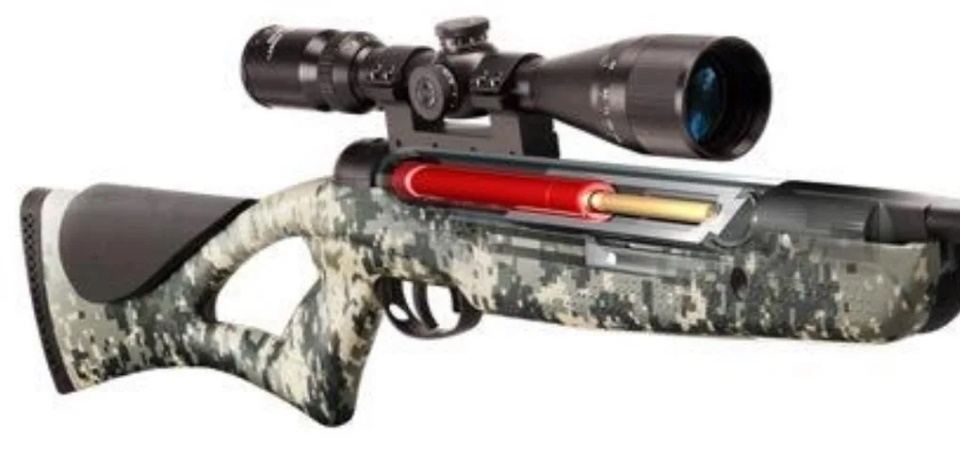Rating of the best clamps for 2022

Clamps (or, more simply, clamps) are the tools necessary for every carpenter. They have the simplest design, but this allows them to perform very responsible functions. The modern market has a large number of varieties of clamps, and each of them has its own application and purpose, and they can also differ in quality.
Content [Hide]
- 1 Clamp - general information
- 2 Structural device
- 3 Purpose and use of clamps
- 4 Classification of clamps according to technical parameters
- 5 Design features of clamps
- 6 Difficulties of choice
- 7 Rating of the best clamps for 2022
- 8 Instead of an epilogue
Clamp - general information
Most carpentry (and not only) workpieces for reliable work must be properly fixed on a workbench. As a rule, such fixation occurs with the help of special clamps, which are clamps. Most often they are used for the production of metalwork and joinery, which makes them indispensable devices for builders, joiners, carpenters and roofers. Although the clamp performs an auxiliary function, it is impossible to do without it when processing long beams, large boards, as well as other large-sized building consumables. The main task is to temporarily secure the workpiece in the required position, which is very simple to do, because the device is extremely easy to operate.
According to its design, the device in question is a base with a vertical position and with working lips with cut threads (or without it), which are placed on an iron frame with a counterpart. The screw element is necessary not only for fixing, but it is also responsible for weakening/increasing the pressure on the fixed object. The devices themselves are most often made of iron, but plastic or wooden models can be produced for specific tasks.

Structural device
The simple design of the device guarantees reliability, and its careful operation and proper use will reduce the risk of breakage to zero.Most of all, the principle of operation of the device is similar to the principle of operation of a vise. However, unlike large and massive vices, the clamps in question are lightweight, which makes them more mobile, and the lightweight design does not imply the application of excessive muscular effort to them. In general, the entire structure can be divided into the following elements:
- Frame - it is the counterpart on which the processed object itself is fixed directly. Options for its execution can be different: and "G-", and "T-", and "C"-shaped;
- Movable element - with the help of it, the distance from the working part to the frame is reduced or increased;
- A screw (in some designs it is replaced by a lever) - is used to fix the clamp in the required position, through which the pressure force is adjusted. Devices with levers have a special drive for accelerated fixation, so the intensity of compression in them increases even with less muscular effort;
- Support heel - located on the inside of the G-frame and is used for more comfortable movement of the threaded stud, which can be made in various shapes. The heel directly rests against the clamped object, thereby ensuring its secure hold. The force will directly depend on the muscular strength of the operator.
Purpose and use of clamps
The use of the devices in question, most often, is not limited to any one area, but in most cases they are used for the following purposes:
- For gripping metal sheets - the design of devices for this functionality consists of an iron body, a handle and a clamping mechanism that works on the basis of spring compression.Such designs are especially popular among warehouse workers and in manufacturing industries.
- To assemble furniture - such work is simply impossible to imagine without the use of a clamp. Here the device is used for compressing the glued elements, as well as for short-term fixation of load-bearing parts in the construction of furniture fittings.
- For the manufacture of formwork - in this direction, the clamp will play the role of a bearing part, with which the wooden supports are held.
- For laying laminate flooring - when working with laminate flooring, it is always necessary to temporarily fix its individual sheets in order to securely fasten them to the base. It is the duration of fixation and the pressure force that will play a significant role in the correct installation of such a floor covering.
- For ventilation installation - in this case, special types of clamps are used, called beam clamps. They can also be used during the laying of engineering connections, where they will serve as fasteners to load-bearing structures. The main advantage of using beam clamps is the fact that the need for welding or drilling holes for fasteners will absolutely make no sense. Thus, the overall execution process will not only be accelerated, but also greatly facilitated.
- For the installation of stretch ceilings - for such work, special clamps are used that have a pincer-like structure. They are made of plastic, and their grip can be variable - these are 100, and 150, and 200 millimeters.The process of using clamps involves temporarily hanging the ceiling cloth before heating it, which will require at least six ceiling clamps in a typical room in a Russian apartment.
Classification of clamps according to technical parameters
Depending on the scope of application, clamps may differ in their technical parameters. Therefore, among the tools under consideration, a division according to several technical criteria is accepted.
By dimensions
The dimensions of the clamp-clamps are one of the main technical parameters by which they are separated. They can be large and small, short and long, and also differ in the size of the working area. Thus, the following differences can be noted:
- Clamp length - it can vary from 150 to 900 millimeters (longer devices may also be found, but they are most likely limited to the area of industrial production only);
- Clamp width - also varies from 120 to 350 millimeters (large sizes in this parameter are not found even in industry);
- The size of the working area - this parameter implies the maximum opening of the movable part. The working area will directly depend on the two previous parameters and can vary from 10 to 600 millimeters.
It is worth noting that the corner clamps have the most minimal grip, the size of the working area in which ranges from 10 to 100 millimeters. The essence of the appointment of such a small distance is that for corner models, contact is made at a right angle. The F-shaped clamps have the maximum working area.For example, if the length of such a tool is 400 millimeters, then it can be captured in the range from 15 to 350 millimeters. G-shaped models belong to the conditionally middle segment, and with a standard length, their working area can be from 70 to 170 millimeters.
According to the material of manufacture
The vast majority of modern clamps use metal parts. However, there are models made of plastic or wood. Thus, according to the material of manufacture, the equipment in question is divided into:
- Forged and cast iron - the main advantage of such devices is their reliability, durability and strength. On the basis of this material, as a rule, F-shaped models are made, which are characterized by an increased cost.
- Plastic - these options can be used to work with objects made of different materials, with the exception of metal. Very often they are used in the process of installing stretch ceilings, gluing plastic or rubber parts, etc. Nevertheless, these models should be made of polymers with good resistance to mechanical stress.
- Stamped metal is the most common type of device that can be used for a wide variety of tasks. However, they are most often used in the installation of load-bearing and metal frame structures. One of their main advantages is the presence of anti-corrosion protection, which is achieved by coating with zinc or galvanizing substances.
- Wooden - such equipment is used to work on soft and fragile materials, which include wooden products. They are characterized by the fact that they are made of solid wood, which extends their service life.
- Aluminum - such equipment is manufactured by casting, and its main advantages are corrosion resistance, low cost and light weight. However, these models are not designed for heavy loads.
IMPORTANT! Clamping equipment can also be made from various alloys, however, professionals do not characterize such tools as highly reliable. The homeland of such models, as a rule, is East Asia.
Design features of clamps
Despite the fact that the clamp is directly an auxiliary tool, it is far from being the same in its design. Depending on the type of work performed, the following types of devices can be used:
- G-shaped - in most cases it is used to work with metal blanks. This design was named in a similar way due to the similarity of its working area with the Latin letter "G" in shape. For the production of such clamps, tool steel is used, which is perfectly reflected in the strength characteristics of the device. At the same time, the curved shape of the working area implies the resistance of the clamp to deformation, and the high-quality retention of the processing object is achieved thanks to the fine-pitch thread located on the screw. At the same time, it is the fine thread that increases the time spent on clamping the workpiece. The tool is suitable for working with metal and wood. The quality of retention is slightly superior to the C-shaped design.
- End - in these devices, the workpiece is fixed from the end side. By itself, such a tool is a conventional clamp, equipped with two movable and one fixed working lips, located perpendicular to each other.For the most part, it is used in furniture production, because with its help it is convenient to fix furniture overlays on the end part.
- T-shaped - it consists of guides for mobile lips installed on a working base. One lip is rigidly attached to the base with a metal stopper, and the other moves with a threaded screw. This type of device is very good for mounting window sashes, and it is also suitable for fixing any workpieces for subsequent stationary processing. They can have a large length and reach 1 meter, they are quite capable of replacing a vise.
- F-shaped - is a simplified version of the previous model. Its main advantages include mobility and an extended range of clamp adjustments. However, when using too long workpieces in this model, the reliability of their fastening will certainly decrease. The components of such a tool are a movable lip and a fixed lip fixed on a metal rail. The movable lip moves along the guide, which allows you to work with large workpieces. Also, one of the advantages can be called the fact that in such a clamp it is possible to hold several workpieces at once.
- Corner - a similar device is designed to connect workpieces at different angles. These devices can be screw or magnetic. The latter type is used for working with iron objects, and the first one is used for working with wooden or plastic ones. Its design consists of a body with two clamping heels, which are located relative to each other at a right angle.
- Belt - it consists of metal or wooden clips that are worn on the belt.Two pairs of clamps are located on the base, and by means of a belt they are pressed down and held. These clamps are used in the manufacture and assembly of furniture, greatly facilitating the workflow.
- Pipe - this device got its name due to the fact that the tuba is the basis of its design. By itself, it looks like a classic clamp, in which one heel is fixed, and the second is able to move along the tube by means of a screw lock (it is also responsible for holding). The main area of use of such equipment is furniture production, where it is very convenient for them to glue the working canvas of countertops and doors. It has extreme adaptability for processing large-sized workpieces.
- Spring - it looks like ordinary tongs with handles, through which the clamping working sponges are set in motion. At the same time, one lip has a rigid fastening, and the second one can be adjusted according to the dimensions of the clamped object.
Difficulties of choice
When buying a clamp, professionals recommend paying attention to the following important points and criteria:
- Object fixation mechanism - in the modern market, models with screw clamps are more popular. They are inexpensive, practical and easy to use. When choosing equipment equipped with a threaded mechanism, it is worth giving special preference to options with a movable working lip. The advantage of this option is that it can handle objects of various sizes.
- The pressing force is another important parameter, which will determine the speed of work, their quality, as well as overall safety for the operator.This characteristic depends on the design features and material of manufacture of the device, it can vary from 0.2 to 20 tons. The maximum pressing force is provided by vacuum or hydraulic models.
- Availability of auxiliary options - the clamp-clamp can be used not only for clamping objects for the purpose of temporary connection, but can also be used as a spreading tool. If the device is focused on such a function, then this will be a definite plus.
- Weight - the lighter the device weighs, the easier it is to handle. The weight of the clamp is also affected by its overall dimensions and the material from which it is made. The most massive are steel and cast iron models, and the lightest are models made of polymers and wood. When choosing a model by weight, it is necessary to pay attention to the fact that the more it weighs, the higher its overall strength and reliability.
- Susceptibility to rust - the steel parts of the equipment in question can be protected from corrosion with a special paint or a special zinc coating, which means an extended service life. If anti-corrosion properties are achieved through galvanic coating, then such devices are more expensive.
- Accessories - Some manufacturers may include special accessories to make the job easier. For example, it is possible to refer to such a T-shaped handle. With its help, fine adjustment of the pressing force is carried out. Also, rubber pads can be placed on the jaws, designed to prevent damage to the surface of the workpieces, which plays a special role when working with products made of soft materials.
Rating of the best clamps for 2022
Budget segment
3rd place: "Matrix 20610"
votes 0
This sample has a very well thought out G-shaped design, which is perfectly combined with a solid body made of durable steel. The device weighs enough - 420 grams. It can work both for gluing and for fixing workpieces when performing carpentry functions. The step for expanding the working area is very convenient and is two inches, and this allows you to comfortably adjust to any size. The fixing screw is equipped with a quality handle, which makes clamping/loosening the part relatively quick. The pressure indicator is 270 kilograms. The recommended retail price is 700 rubles.

- Stepping settings;
- Durability;
- Good pulling force.
- Not detected.
2nd place: "Stanley 0-83-033"
votes 0
This sample is made of cast iron, which means increased frame strength, and its body is coated with an anti-corrosion compound. The fixture is able to withstand intense bending loads. The clamping screw is made of steel and is especially good at providing more torque thanks to the T-handle. However, the working area of the pharynx of this model is not regulated. However, the increased weight of 610 grams ensures that parts are securely clamped. The recommended cost for retail chains is 760 rubles.

- T-handle;
- Availability of anti-corrosion protection;
- Big weight.
- Unregulated working jaw.
Clamp video demonstration:
1st place: "Stanley FATMAX"
votes 0
This device can be used not only as a classic clamp, but also as a full-fledged spacer. It is structurally possible to turn the lips for clamping, which expands the functionality.The product uses high-quality steel and nylon, which is a guarantee of strength and lightness. Small equipment (310 grams) is very comfortable to hold with one hand. With a total length of 15 centimeters, along with a depth of 7 centimeters, the device can be used for almost any workpiece. The established store price is 870 rubles.

- Dual purpose (clamp and spacer);
- Quality of execution;
- Adequate price.
- Not detected.
Video review of these clamps:
Middle price segment
3rd place: "Stanley 0-83-122 919"
votes 0
The described sample is designed for increased clamping force for workpieces with right angles and different thicknesses. The base of the device is made of cast aluminum, so that the weight does not exceed 1 kilogram. For the convenience of work, the manufacturer installed a two-component handle, and thanks to the upper rotary lip it is possible to fix a straight workpiece. Placement on a workbench is possible with the help of special holes in the tool body. However, for quality work it is better to use a couple of these samples. The recommended store price is 1000 rubles.

- Two-component handle;
- Relatively light weight;
- High quality die-cast body.
- The need to use in pairs.
Video review of corner clamps:
2nd place: "Gross 20717"
votes 0
This rack and pinion device belongs to the category of high-tech and is used mostly by professionals. Able to fix parts with dimensions up to 100 millimeters. The strength of the entire structure is provided by tool steel.The tightening torque is increased due to the Vibrafix quick-clamping locking mechanism. For processing objects made of soft materials, rubber pads are installed on the working jaws. In general, the product is distinguished by its quality factor, affordable price and a good clamping mechanism. The established store price is 2100 rubles.

- Reliable clamping mechanism;
- Tool steel body;
- Big working pharynx.
- Rubber pads may require additional fixation with adhesive.
1st place: "BAHCO QCB-900"
votes 0
This quick clamping device from a Swiss manufacturer is perfect for large workpieces. It is able to provide the necessary level of safety for the worker. The rail has a length of 900 millimeters, and the working sponges are equipped with rubber gaskets. The handle is also rubberized to prevent slippage. The work is done in very comfortable conditions, the handles are pressed very easily. The established cost for retail chains is 2510 rubles.

- Sturdy metal rail;
- The presence of rubber gaskets;
- Possibility of use as a spacer.
- There is no anti-corrosion protection.
Premium class
3rd place: "Bessey BPC-H34"
votes 0
This device belongs to the category of pipe and it can really be considered universal - it can work with workpieces of such dimensions as the carrier tube will allow. In addition, in addition to compression, it is also possible to use it as a spacer. The accelerated locking mechanism allows you to make all production processes more comfortable. The design has rubber pads that make working with soft materials better.The body is protected from corrosion by a special paintwork. The established cost for the retail network is 3,500 rubles.

- Variation in the size of the work;
- The presence of soft lining;
- Anti-corrosion treatment.
- High price.
All about clamps of this brand:
2nd place: "WILTON 65014 4700"
votes 0
This tool is perfectly capable of working with corner objects. Its wide and powerful working lips are capable of clamping parts up to 100 millimeters long at a depth of 85 millimeters. It has a high-quality professional purpose and is more focused on working with metal. The weight itself is 5 kilograms, which, coupled with a powerful screw clamping mechanism, will provide the best fixation of the object. The T-handle increases the torque, which increases the overall speed of the work. The birthplace of the brand-manufacturer is the USA. The set price for retail chains is 4,500 rubles.

- Great weight;
- Powerful screw mechanism;
- T-handle.
- High price.
1st place: "Bessey GH40"
votes 0
This F-pattern is great for getting things done faster. The release and fixation of parts is much faster thanks to the lever mechanism. The fixed object itself will still be able to withstand extraneous vibration. The clamping force is 0.8 tons. A release lever is provided to resist slipping. The product is focused on fixing metal blanks. The maximum depth is 120 millimeters with a total length of 400 millimeters. The recommended retail price is 10100 rubles.

- The presence of protection against slipping;
- Powerful pressing force;
- Anti-vibration.
- Too high price.
Instead of an epilogue
The analysis of the market of the devices under consideration established that it is mainly dominated by a foreign manufacturer. The dynamics of prices is noted at an insignificant level for the premium and middle price segments, but as for budget models, their cost tends to steadily decrease every month. Nevertheless, most professionals recommend purchasing universal models with optional extensions and auxiliary accessories.
new entries
Categories
Useful
Popular Articles
-

Top ranking of the best and cheapest scooters up to 50cc in 2022
Views: 131658 -

Rating of the best soundproofing materials for an apartment in 2022
Views: 127698 -

Rating of cheap analogues of expensive medicines for flu and colds for 2022
Views: 124525 -

The best men's sneakers in 2022
Views: 124041 -

The Best Complex Vitamins in 2022
Views: 121945 -

Top ranking of the best smartwatches 2022 - price-quality ratio
Views: 114984 -

The best paint for gray hair - top rating 2022
Views: 113400 -

Ranking of the best wood paints for interior work in 2022
Views: 110326 -

Rating of the best spinning reels in 2022
Views: 105334 -

Ranking of the best sex dolls for men for 2022
Views: 104373 -

Ranking of the best action cameras from China in 2022
Views: 102222 -

The most effective calcium preparations for adults and children in 2022
Views: 102016









